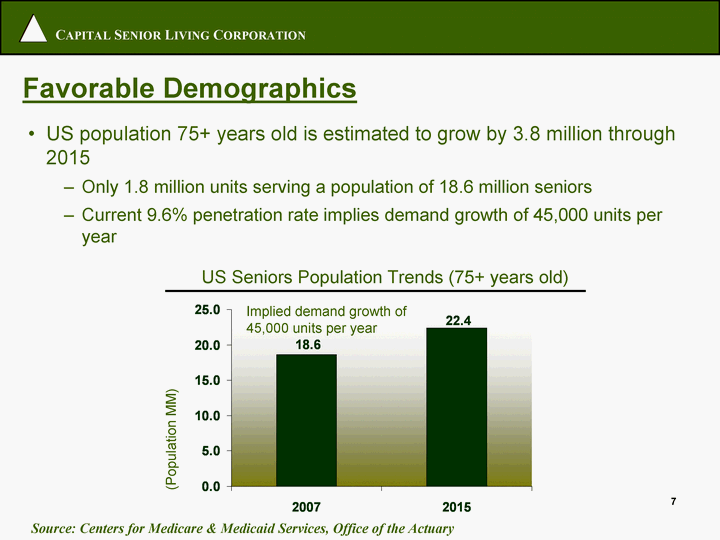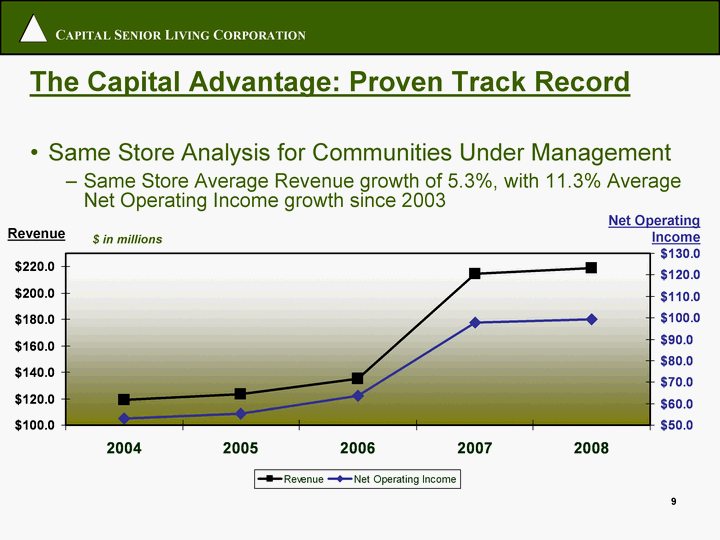Free signup for more
- Track your favorite companies
- Receive email alerts for new filings
- Personalized dashboard of news and more
- Access all data and search results
Filing tables
SNDA similar filings
- 17 Sep 09 Departure of Directors or Certain Officers
- 5 Aug 09 Capital Senior Living Corporation Reports Second Quarter 2009 Results
- 19 Jun 09 Departure of Directors or Certain Officers
- 12 May 09 Regulation FD Disclosure
- 6 May 09 Capital Senior Living Corporation Reports First Quarter 2009 Results
- 11 Mar 09 Capital Senior Living Corporation Reports Fourth Quarter and Full Year 2008 Results
- 23 Jan 09 Capital Senior Living Corporation Announces $10 Million Stock Repurchase Program
Filing view
External links




















